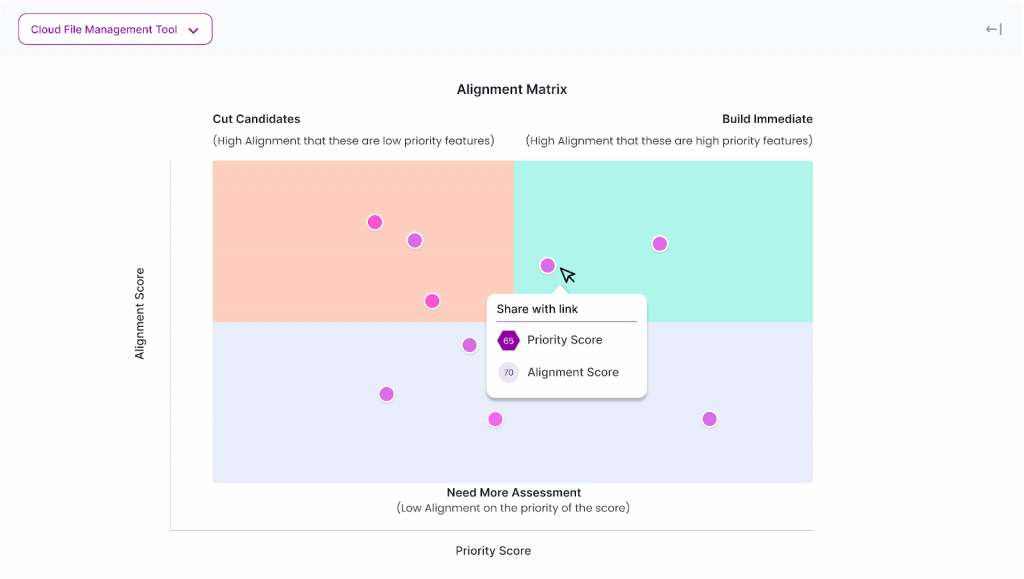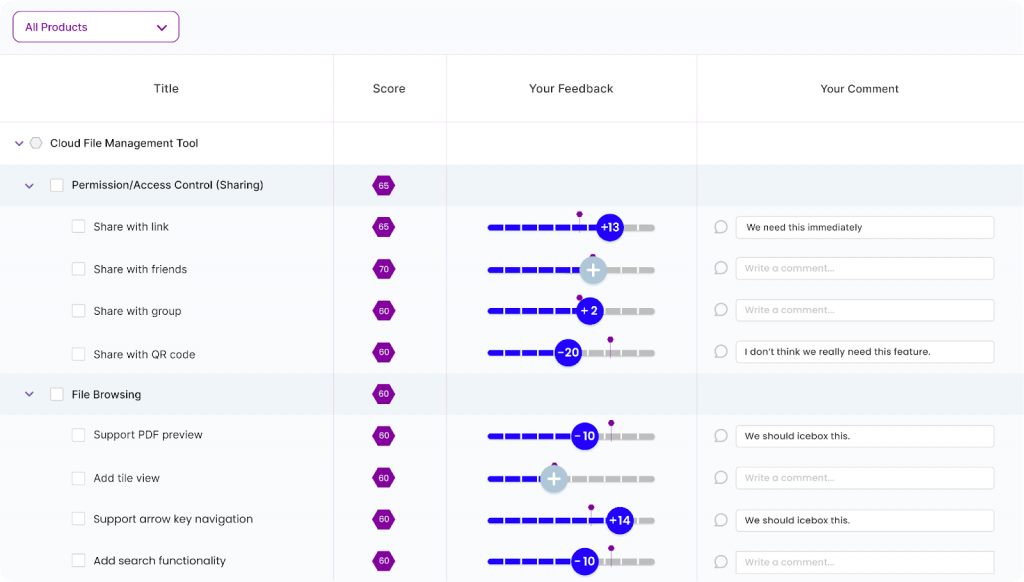How to Align Your Product Roadmap with Business Goals

Building a product roadmap is a crucial activity for any product manager. However, creating a roadmap in isolation, without considering the broader company goals, can lead to misalignment. This results in products that only partially meet customer needs or drive business value.
According to research by Accenture, only 29% of product launches are considered successful. One of the main reasons is a disconnect between the product roadmap and strategic company objectives.
Aligning your roadmap with business goals ensures the product direction ladders to broader organizational targets. This increases the likelihood of launching successful products that create real value.
In this blog, we will understand the frequent pain points of product managers.
For starters, here are some quick tips for aligning your product roadmap with business goals:
- Understand business objectives and KPIs.
- Analyze customer needs and market trends.
- Focus on value, not just features.
- Involve stakeholders early in the planning process.
- Use OKRs and KPIs to measure impact and iterate as goals evolve.
Why is it Important to Align Your Product Roadmap with Company Goals?
There are several critical benefits to aligning your roadmap with business goals:
Drives the Right Priorities
Connecting product and company goals helps focus the roadmap on the right priorities. Features that drive core strategic objectives to the top of the backlog. Rather than “nice-to-have” items that don’t contribute meaningful business value.
Maximizes Resources
Aligning the roadmap with company goals ensures your limited development resources are spent on the products and features that matter most. There’s less waste on building things no one wants or that don’t move the needle.
Cross-Functional Buy-In
Getting buy-in across functions on the product roadmap is much easier when linked to company goals. Stakeholders from Sales, Marketing, Support, etc, see how the product direction ties to their broader objectives.
Higher ROI
Products built to drive business goals have the highest return on investment. When the roadmap aligns with strategy, there is a more precise line of sight on how the product will create value.
How to Align Your Product Roadmap with Business Goals
Here are five steps to ensure your product roadmap ladders up to overall company objectives:
- Understand the Company Goals
- Define Your Product Vision
- Map Company Goals to Your Roadmap
- Prioritize Features Driving Goals
- Communicate Cross-Functionally
Step 1: Understand the Company Goals
First, you need clarity on what the business is trying to achieve. This means understanding objectives at both the company and department levels.
Key questions to ask:
- What is the overall company vision?
- What are the 12-24 month company goals?
- How is success measured? (e.g., revenue target, customer growth, market share, etc.)
- What are the goals per business function? (Sales, Marketing, Customer Support, etc.)
Make sure you gather all documentation on company-wide strategy and plans. Use quarterly business reviews to capture department-specific goals.
Here are some ways Chisel can help organizations understand their company goals:
Chisel helps conduct organizational research. It can analyze internal documents, project plans, financial reports, and other materials to comprehensively view a company’s stated strategic objectives, values, and vision. The software can summarize this information in clear, concise words to help teams recap where the business is trying to go.
The tool can also be used as a tool for stakeholder outreach. It makes scheduling and conducting surveys. It then analyzes responses for common themes, priorities, and aligned or differing viewpoints between groups. This helps reveal organizational goals from multiple angles.

In these ways, Chisel is a valuable partner in gaining comprehensive insight into an organization’s goals through research, outreach, and data analysis — helping ensure team alignment throughout product development.
Step 2: Define Your Product Vision
Next, define a clear vision for your product tied to solving customer problems and achieving desired outcomes.
Ask yourself:
- Who is the target customer, and what problems do they have?
- How can our product help customers achieve their goals?
- What does success look like for our customers?
A product vision focuses on customer satisfaction and delivering tangible value. It provides crucial context for day-to-day roadmap prioritization.
Here are some ways Chisel can help teams define their product vision:
Teams can leverage Chisel as a facilitator to gather input from across departments through surveys or virtual workshops. It then synthesizes these perspectives to craft a unified vision with all stakeholders’ buy-in.
Equally, the tool outlines the research, rationale, and strategic objectives that define the product vision in a clear report. This foundation strengthens execution by giving everyone a shared understanding of the intended direction.
Step 3: Map Company Goals to Your Roadmap
Identify where company and department goals align with your product vision and roadmap.
Create a matrix with:
- Company goals on one axis
- Roadmap themes/features on the other axis
Identify all intersections between company objectives and planned product capabilities. This highlights roadmap items that will directly drive business goals.
For example, an eCommerce company goal of 10% sales growth maps to product features like better search and recommendations.
Here are some ways Chisel can help map company goals to your product roadmap:
Chisel can analyze a company’s goals, priorities, and critical metrics to understand its strategic objectives deeply. It identifies the most important outcomes the business wants to achieve.
This mapping process provides visibility into where the roadmap strongly or weakly aligns with company goals. It surfaces gaps where priorities may be mismatched or missed opportunities aren’t addressed.
The tool also identifies the specific, measurable outcomes that different roadmap elements aim to impact. This allows goals to be quantified and progress tracked over time.
Roadmasters can leverage Chisel to continuously assess how shifting business conditions may change the priorities of goals. It recommends roadmap adjustments as needed to maintain optimal alignment.
By assisting with this crucial alignment work, Chisel helps roadmaps stay focused on transforming goals into realities. This gives stakeholders confidence resources are invested in the exemplary strategic work.
Step 4: Prioritize Features Driving Goals
With a clear view of where company goals and product features intersect, you can now intelligently prioritize your roadmap.
- Top priority: Capabilities strongly aligned to one or more major company goals. These need to be at the very top of your backlog.
- Medium priority: Features loosely aligned to company goals. Schedule these after must-have goal-driving items.
- Low priority: No tie to company goals. Move these to the bottom of the backlog or cull entirely.

Here are some ways Chisel can help prioritize features to drive company goals:
Foster an inclusive culture by inviting participation from all team members. See strictly which team members have provided prioritization feedback on which features.
Chisel also considers implementation factors like development effort, risk, and dependencies to evaluate feasibility through roadmaps. It identifies high-value items that are realistic to deliver quickly for near-term results.
Stakeholder input is analyzed to ensure priorities align across teams. It synthesizes this feedback to recommend a ranking balancing strategic fit with practical execution.
The prioritization is documented with a clear rationale, including qualitative and quantitative analysis. This facilitates transparent discussions for consensus on finalizing feature sequencing.
As business conditions change, It helps continuously re-evaluate priority areas. It advises adjusting the pipeline as needed to maintain focus on features most important for achieving goals.
Step 5: Communicate Cross-Functionally
The final step is ensuring broad visibility of your roadmap and its alignment with goals across the organization.
- Share the roadmap visually highlighting key strategic features.
- Call out specific company goals tied to roadmap initiatives.
- Present to senior leadership and at the company all-hands meetings.
This drives cross-functional buy-in at all levels and keeps everyone aligned.
Here are some ways Chisel can help communicate cross-functionally:
On a per-feature basis, let your stakeholders vote on feature prioritization by rating the priority on a scale of 1-100 and commenting with individualized feedback.

Leverage our bird’s eye view of the team’s feature prioritization feedback. Quickly see where your team has high alignment on prioritization and where there is widespread disagreement.
Reports and documentation generated by Chisel present a unified view of synergized inputs and outcomes. This consolidated communication streamlines sharing status and insights company-wide.
By handling various communication and coordination tasks, Chisel frees team members to focus on their specialties. This helps foster efficient collaboration across functions.
Key Takeaways
So, with these, we have reached the end.
Aligning your product roadmap with business goals is crucial for any organization’s success. It fosters collaboration when engineering, marketing, and other teams work together closely to understand objectives and priorities. It ensures everyone is rowing in the same direction. Smaller companies especially need that coordination to make the most of limited resources. With clear guidance on what outcomes will move the needle for customers and the bottom line, team members feel empowered and energized to take their work to the next level.
Over time, goals and market conditions will inevitably evolve.
But, maintaining the open communication and flexibility demonstrated in roadmap planning goes a long way.
Employees respect leaders who are willing to adapt strategies as information develops. More importantly, it leads to products and services that best serve people in the future.
Isn’t that what business truly is – solving problems and enriching lives?
When roadmaps serve that higher purpose, everyone wins.
